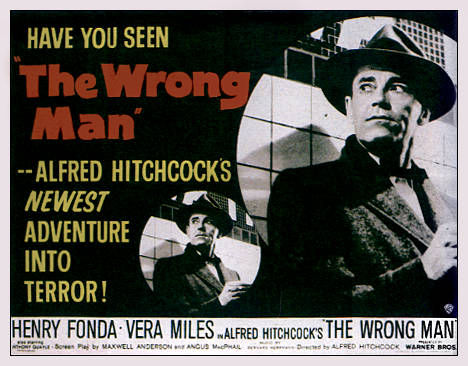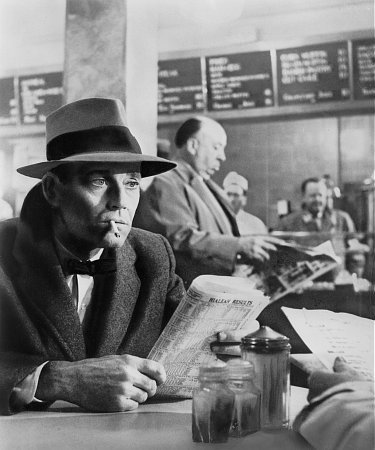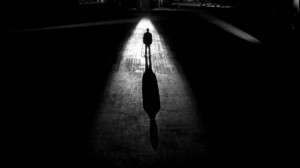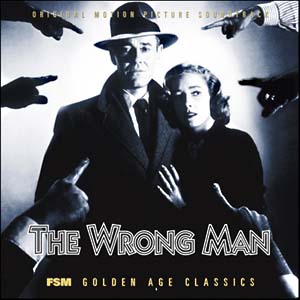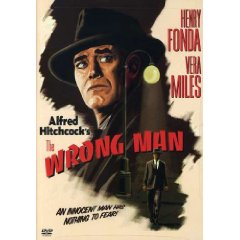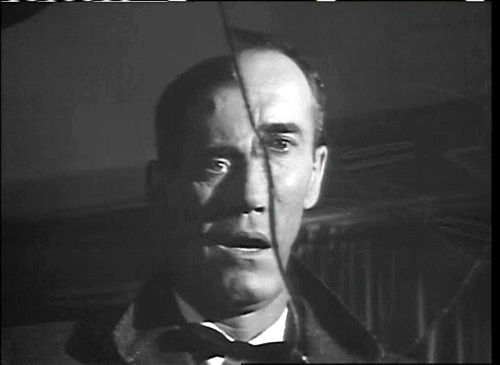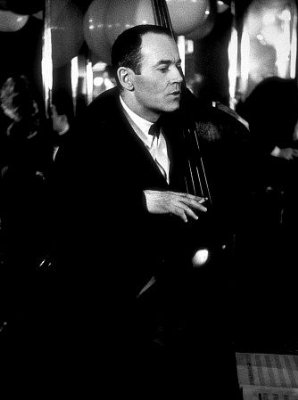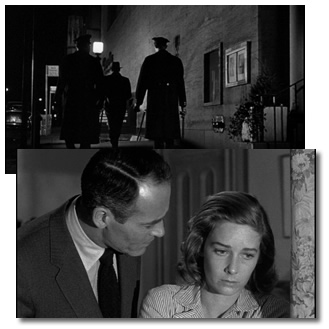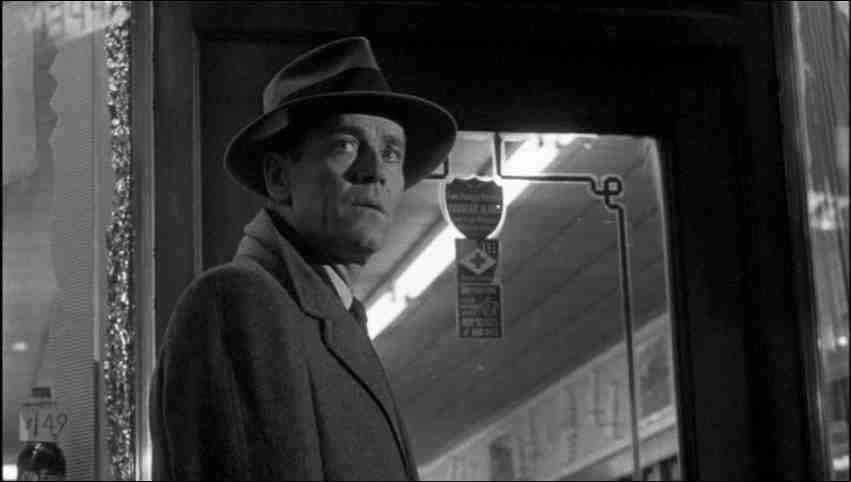This was originally a lecture given at a conference on Godard held in Cerisy, France on August 20, 1998. It subsequently appeared in a printed form somewhat closer to that found below, in Screen magazine (vol 40, no. 3), in Autumn 1999, as part of a Godard dossier assembled by the estimable Michael Witt. But, if memory serves, it took about a year of correspondence and wrangling before anyone on the magazine’s staff agreed to send me any copy of the issue. (Note: for a more general essay and interview with Godard about Histoire(s) du cinéma, go here.) —J.R.
Le Vrai Coupable: Two Kinds of Criticism in Godard’s Work
Jonathan Rosenbaum
Since the outset of his career, Godard has been interested in two kinds of criticism — film criticism and social criticism — and these two interests are apparent in practically everything he does and says as an artist. The first two critical texts that he published — in the second and third issues of Gazette du cinéma in 1950 — are entitled “Joseph Mankiewicz” and “Pour un cinéma politique”, and his first two features, A bout de souffle and Le petit soldat, made about a decade later, reflect the same dichotomy. (1)
What I’d like to do here is trace these two interests in relation to Godard’s commentaries on Alfred Hitchcock. These commentaries span almost half a century, from the publication of two articles in 1952 to the completion of Histoire(s) du cinéma in 1998, and I’d like to make particular reference to what I regard as Godard’s best single film review — his analysis of The Wrong Man, “Le Cinéma et son double,” published in Cahiers du cinéma in June 1957 (2) — and to a particular passage in the seventh and penultimate episode of Histoire(s) du cinéma, “Le Contrôle de l’univers”.
My concern is with both the continuity and discontinuity between these two texts. Godard himself emphasizes the continuity by according special attention in “Le Contrôle de l’univers” to The Wrong Man (Le faux coupable), which also happens to be the film that he analyzed in the greatest detail as a writer forty years earlier. Moreover, in both of these texts, Godard gives particular emphasis to two pivotal and highly charged scenes in Hitchcock’s film: the first night spent by Emmanuel Balestrero (Henry Fonda) in his prison cell, and the slow lap dissolve from Balestrero silently praying in close-up while looking at a picture of Christ and the appearance on the street of the man whose crime he was falsely accused of, who slowly approaches the camera until the features of both men merge — an event described by Godard in both texts as a miracle. Both of these scenes, I should add, are moments when the intervention and presence of Hitchcock as a director are most apparent; both involve close shots of Henry Fonda, although the first is mainly concerned with Balestrero’s experience and consciousness and the second is mainly concerned with his destiny.
These are the principal forms of continuity I find between these two texts, although I’m sure one could find others. What are the principal forms of discontinuity? Some of these belong to the history of reception — such as the change in Hitchcock’s reputation from that of an entertainer to that of a serious artist, a change mainly brought about through the collective efforts of Truffaut, Godard, Chabrol, Rohmer, Rivette, Bitsch, Douchet, Demonsablon, and Domarchi, among others. But other forms of discontinuity can be found between the separate descriptions of Hitchcock’s art offered by Godard in the two texts.
In “Le Cinéma et son double,” Godard’s analysis of Hitchcock is concerned mainly with stylistic articulations of states of consciousness, metaphysical states of being, and thematic and dramatic significations. In “Le Contrôle de l’univers,” he is primarily concerned with Hitchcock as the only “poète maudit” who succeeded commercially, coupled with the argument that his films are mainly remembered not for their states of consciousness, metaphysical states of being, or their thematic and dramatic significations but for certain physical objects. To paraphrase Godard’s own discourse in “Le Contrôle de l’univers,” one forgets the circumstances of why Janet Leigh is going to the Bates Hotel, why Montgomery Clift keeps his vow of silence, why Teresa Wright is still in love with Uncle Charlie, how Henry Fonda becomes “le faux coupable,” and why Ingrid Bergman is hired by the American government. But one remembers a rosary, a glass of milk, a windmill, a hairbrush, a lost pair of spectacles, a lost key, and the visible notes in a musical score. Both these analyses of Hitchcock, I would argue, are anti-Bazinian in certain respects — not only because Bazin was not a Hitchcockian, but also because the first text defends Hitchcock as a expressionist and privileges montage and transitional passages over scenes, and the second text privileges nonnarrative elements over narrative elements, and perhaps what could be described as poetry over prose.
Before I get around to discussing the implications of the discontinuity between these two texts, I’d like to pinpoint some of the differences between the analysis of The Wrong Man offered in “Le cinéma et son double” and some of the positions of both Truffaut and Hitchcock regarding the film. I’d also like to note some of the discrepancies between the true story of Christopher Emmanuel Balestrero and the story of Hitchcock’s film.
Although Godard’s article was indebted to Truffaut’s seminal 1954 text, “Un trousseau de fausse clés” (“Skeleton Keys”) (3), in describing the doubling structures of The Wrong Man, his defense of the camera’s “gyratory movement” (4) around Fonda in his jail cell is the opposite of Truffaut’s subsequent response in conversation with Hitchcock, which is to call this camera movement an “antirealistic effect” (5). Here is Godard’s defense of the same camera movement:
“Through this camera movement, he [Hitchcock] manages to express a purely physical trait: the contraction of the eyelids as Fonda closes them, the force with which they press on the eyeballs for a fraction of a second, creating in the sensory imagination a vertiginous kaleidoscope of avstractions which only an equally extravagant camera movement could evoke successfully.” (6)
What seems striking about this description is that it defends Hitchcock simultaneously as an expressionist and as a documentary filmmaker. The same duality informs Godard’s review of Strangers on a Train five years earlier — which links Hitchcock with the German expressionism of Lang and Murnau while praising his sense of the real in the filming of certain scenes and locations — and it is at least implied in other critical remarks he made about Hitchcock during the 50s. (7) In a 1952 article called “Qu’est-ce que le cinéma?”, he remarked, “Flaherty’s genius, after all, is not so far removed from that of Hitchcock — Nanook hunting his prey is like a killer stalking his victims...” (8) And in his 1956 review of The Man Who Knew Too Much, he wrote, “This is perhaps thwe most improbable of Hitchcock’s films, but also the most realistic.” (9)
In “Le Contrôle de l’univers,” Godard calls Hitchcock “the only one, together with Dreyer, who succeeded in filming a miracle,” and in “Le Cinéma et son double” he discusses not one but three miracles in the film. The first miracle, according to Godard, occurs during the hero’s second imprisonment, when “the camera retreats before Manny after having pushed him into the cell.” We hear his name being called offscreen, and we then discover that he’s being released on bail. (10) The second miracle, which is the only one shown in “Le Contrôle de l’univers,” is the one already described in which images of the “faux coupable” (wrong man) and le vrai coupable (the right man) are superimposed. And the third, though unshown in the film, is prepared for in the final scene and then alluded to in the final title. When Manny Balestrero visits his wife in the sanitarium and discovers that she’s still mad, despite the fact that his innocence has been established, he says to a nurse, “I guess I was hoping for a miracle,” and the nurse replies, “They happen. But it takes time.” Shortly afterwards, a title appears on the screen: “Two years later, Rose Balestrero walked out of the sanitarium — completely cured. Today she lives happily in Florida with Manny and the two boys…and what happened seems like a nightmare to them — but it did happen….” Then, before the end title, there’s a final dissolve to the family seen in extreme long shot on a sunny street in Florida. As Godard says at the conclusion of “Le Cinéma et son double,” “Draw your own conclusion.” (11)
But it’s worth pointing out that Hitchcock describes none of these three events as miracles in his conversation with Truffaut. He makes no allusion to the first event, describes the second not as a miracle but as an “ironic coincidence” (12), and when it comes to the third, he significantly misremembers the conclusion of his own film and, after noting that “[Balestrero’s] wife lost her mind and was put in an insane asylum,” he adds, “She’s probably still there.” (13) In defense of Hitchcock, it could be said that emotionally and dramaturgically, this is the way we all tend to remember the film, because the sense of hopelessness that pervades the narrative is so unrelenting that the film’s postscript about the story’s aftermath makes a relatively small impression on us. (In conversation, James Naremore once described The Wrong Man to me as the most depressing commercial film in American cinema, and I think he may be right.)
Let me turn now briefly to the true story of Balestrero as recounted in an article by Marshall Deutelbaum, “Finding the Right Man in The Wrong Man“. (14) Basing much of his research on the Life magazine news story by Herbert Brean, “A Case of Identity” (29 June 1953), that inspired Hitchcock’s film as well as on a one-hour TV dramatization with the same title that was broadcast on Robert Montgomery Presents on 11 January 1954, about two years before The Wrong Man went into production, Deutelbaum shows in detail that “while The Wrong Man retains the general details of Balestrero’s arrest and trial, as well as the details of Rose’s breakdown, the weak points of the police investigation, the ease with which Balestrero was able to establish his alibis, and the effectiveness of his attorney have been eliminated from the screenplay.” (15) Moreover, the scene described by Godard and Truffaut as a “miracle” was Hitchcock’s invention: “Though Balestrero was a religious man and prayed at his trial… [he] was not praying, but playing in the Stork Club band at the time of [the real robber’s] arrest.” Another discovery Deutelbaum makes, this one purely textual, is that the vrai coupable is seen crossing paths with Balestrero at least three times in the film prior to the staged miracle; Balestrero even bumps into him on his way to the insurance office where he is initially falsely identified as the robber.
What all these discoveries suggest is that Hitchcock’s metaphysical suppositions about the meaning of the story provided a filter for his documentary rigor, thereby shaping the narrative and even, one could argue, inflecting its documentary verisimilitude. The best defense of this approach is ironically furnished by Bazin: “Good cinema is necessarily, in one way or another, more realistic than bad cinema. But simply being realistic is not enough to make a film good. There is no point in rendering something realistically unless it is to make it more meaningful in an abstract sense. In this paradox lies the progress of the movies.” (16) Insofar as Godard’s films and videos better illustrate this maxim than any of Truffaut’s films, one could argue that Godard eventually proved to be the more Bazinian of the two, in his practice as well as his theory.
***
I don’t feel qualified to discuss what it means to be a French Swiss Protestant in a French Catholic milieu, but I’d like to suggest that the French Catholic cinephilia of Cahiers du cinéma in the 50s partly involved seeing directors as if they were priests. In connection with this, I’ve always suspected that Bazin’s taste for the low camera angles and ceilings in early Welles corresponded in part to the vantage point of someone praying. Similarly, the notions of destiny and fatality associated with Murnau, Lang, and Hitchcock had a particular Catholic inflection, and I suspect that part of what Godard brought to this metaphysics was a certain existential restlessness combined with a romantic view of politics and passion for dialectics. In effect, Godard adopted an Eisensteinian view of Hitchcock, a preference for montage over mise en scène, and in many respects his view of Hitchcock in the 90s sustains this Eisensteinian perspective. Even if Eisenstein never became a poet maudit for the masses the way Hitchcock did, one could certainly argue that what one forgets in Potemkin are personal motivations and plot details and what one remembers are a pair of broken spectacles, a baby carriage, and a series of stone lions.
How does this view of Hitchcock become translated into social criticism? Problematically at best. In an oblique fashion Hitchcock’s fear of the police implies a distrust of the established order, something one clearly also finds in Godard’s work. Yet paradoxically, by the time Godard makes La chinoise, the notion of the faux coupable becomes transformed into the man accidentally killed by Véronique, a Maoist terrorist, instead of her intended target — a character whom she subsequently kills in turn when she returns to the same apartment house to correct her mistake. Moreover, this innocent victim is pushed so far into the margins of La chinoise that we never see his face — in contrast to Balestrero, whose face occupies the emotional center of The Wrong Man and becomes a central reference point in “Le Cinéma et son double”. Let me quote again from Godard’s review:
“The beauty of each of these closeups, with their searching attention to the passage of time, comes from the sense that necessity is intruding on triviality, essence on existence. The beauty of Henry Fonda’s face during this extraordinary second which becomes interminable is comparable to that of the young Alcibiades described by Plato in The Banquet [also known as The Symposium]. its only criterion is the exact truth. We are watching the most fantastic of adventures because we are watching the most perfect, the most exemplary, of documentaries.” (17)
Of course in The Wrong Man Godard is identifying more with Hitchcock than with Balestrero, and much of the lasting value of La chinoise, widely misunderstood at the time of its release, is its relative objectivity towards its Maoist characters, its refusal to take sides. But I think what Godard is mapping out in this description of Fonda’s face, as Annette Michelson has suggested, is the notion of fiction and documentary forming a continuum, and this would inform his subsequent films politically as well as aesthetically. (18) (The political implications of this continuum are fully apparent in the contemporary social criticism of Alphaville, for example. By using existing Paris locations to represent the future in a distant galaxy, Godard created an allegory about France in 1965 that is full of specific as well as more general social criticism, altering the possibilities of science fiction films in the process.)
In other respects, it’s more difficult to see Godard functioning as a social critic while writing about Hitchcock, partly because it’s debatable whether Hitchcock himself can be regarded as a social critic. The same thing could be said about Kafka insofar as a metaphysical reading of the work of either artist tends to rule out social criticism, and metaphysical criticism is what Godard and most of his colleagues at Cahiers du Cinéma specialized in. But recalling the suggestion of Joseph McBride that The Wrong Man constitutes a better adaptation of Kafka’s The Trial than Welles’s more literal adaptation, I think it could be argued that Kafka’s novel and Hitchcock’s film both offer powerful social critiques of bureaucracy, and some aspects of these critiques, or their equivalents, can be found in Godard’s subsequent films. (19)
In closing, I have to confess that I don’t agree with Godard that Hitchcock was “le seul avec Dreyer qui a su filmer un miracle” — a compliment that takes too much credit away from Vigo and Buñuel, among others, not to mention Rossellini. Since I don’t regard Dreyer’s cinema as religious at all in many fundamental respects — for me his cinema represents not belief but challenges to beliefs, including paradoxically the beliefs of atheists — I have a lot of trouble connecting his materialism with Hitchcock’s metaphysics.
But of course it’s difficult to disagree about miracles unless one can agree on what constitutes a miracle. I can accept the premise that the first official appearance of le vrai coupable in Hitchcock’s film, superimposed over the features of Balestrero, represents a miracle in relation to the struggles of French Hitchcock criticism in the 50s because it furnishes a vindication and validation of what Truffaut, Chabrol, Rohmer, Godard and others had been writing for years about the double and the transference of guilt in Hitchcock’s films. This is why Truffaut could write in 1957, “This is certainly the most beautiful shot in Hitchcock’s work and it summarizes all of it.” (20) Perhaps for the same reason, Truffaut’s review of The Wrong Man concludes, “it is probably his best film, the one that goes farthest in the direction he chose so long ago.” (21) Less than decade later, while interviewing Hitchcock after becoming a successful director, he viewed the film more skeptically, regarding it mainly as a failure and saying to him by way of explanation, “You’ve convinced me that the best Hitchcock films are the ones that are most popular with the audience” (22) — a criterion that incidentally also rules out Vertigo, the film Hitchcock made just after The Wrong Man. Earlier in the same interview, Truffaut explains that he thinks Hitchcock’s style, “which has found its perfection in the fiction area, happens to be in total conflict with the aesthetics of the documentary and that contradiction is apparent throughout the picture.” (23) The same contradiction, I would add, helped to create the dialectical force of Godard’s style as a filmmaker and made much of its social criticism possible.
Notes
1. Reprinted in Godard on Godard, translated and edited by Tom Milne, New York: Da Capo, 13-16, 16-17.
2. Ibid., 48-55.
3. François Truffaut, “Un trousseau de fausse clés,” Cahiers du Cinéma, vol 7, no. 39 (1954), 45-52. Translated as “Skeleton Keys” in Cahiers du Cinéma in English no. 22 (1966), 60-66.
4. Godard on Godard, op. cit., 51.
5. François Truffaut, with the collaboration of Helen G. Scott, Hitchcock, New York: Touchstone Books, 1985, 240.
6. Godard on Godard, op. cit., 51.
7. Ibid., 22-26.
8. Ibid., 30-31, 31.
9. Ibid., 36-39, 37.
10. Ibid., 52.
11. Ibid., 55.
12. Truffaut, Hitchcock, op. cit, 243.
13. Ibid., 235.
14. Included in A Hitchcock Reader, edited by Marshall Deutelbaum and Leland Pogue, Ames: Iowa State University Press, 1986, 207-218.
15. Ibid., 209.
16. André Bazin, Jean Renoir, translated by W. Halsey and W. Simon, New York: Simon and Schuster, 1973, 85.
17. Godard on Godard, op. cit., 49.
18. Ibid., viii.
19. Joseph McBride, Orson Welles, revised and expanded edition, New York: Da Capo, 1996, 157-158.
20. François Truffaut, The Films of My Life, translated by Leonard Mayhew, New York: Simon and Schuster, 1975, 86.
21. Ibid.
22. Hitchcock by Francois Truffaut, op. cit., 366.
23. Ibid., 362.

